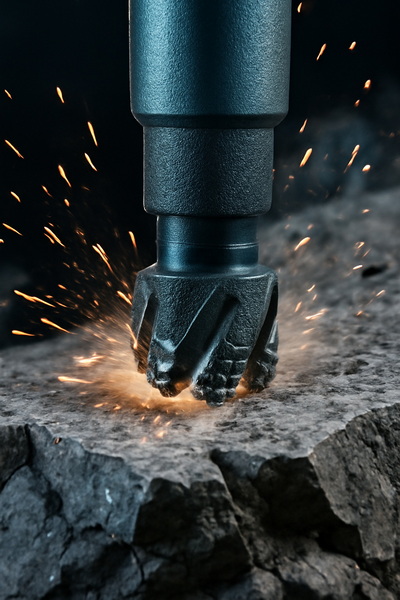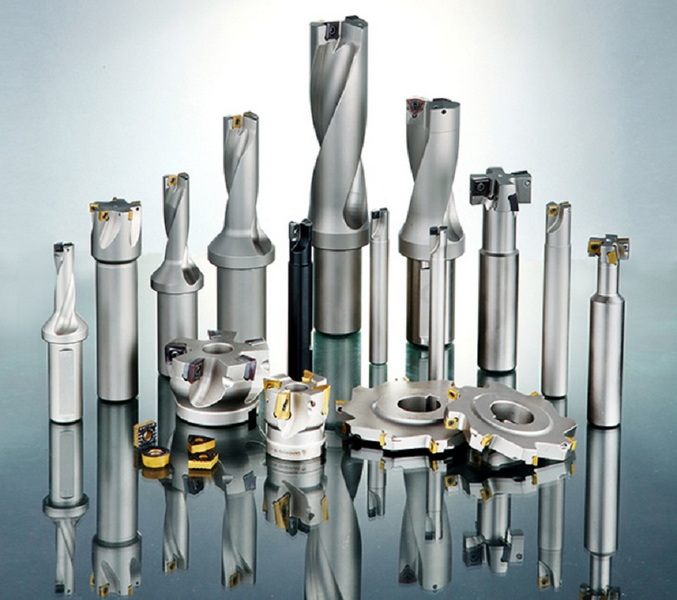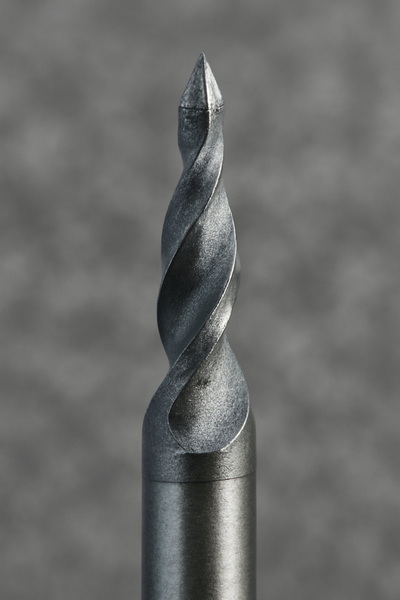Content Menu
● Key Properties of Silicon Carbide
>> Exceptional Hardness
>> Thermal Stability
>> Chemical Inertness
>> Wear Resistance
>> Thermal Conductivity
● Applications Driving Efficiency
>> 1. Oil and Gas Exploration
>> 2. Semiconductor Manufacturing
>> 3. Aerospace and Defense
>> 4. Mining and Construction
>> 5. Renewable Energy Systems
● Technological Innovations
>> Ultrasonic-Assisted Drilling
>> Hybrid Drill Designs
>> Additive Manufacturing
>> Nano-Coated SiC Tools
● Sustainability and Cost Analysis
● Conclusion
● Frequently Asked Questions
>> 1. How do silicon carbide products compare to tungsten carbide drills?
>> 2. Can silicon carbide products drill through metals?
>> 3. What maintenance do silicon carbide drills require?
>> 4. Are silicon carbide products cost-effective for small-scale operations?
>> 5. Can SiC drills be re-sharpened?
Silicon carbide (SiC) products have revolutionized drilling operations across industries, offering unparalleled performance in challenging environments. Their unique properties-extreme hardness, thermal stability, and wear resistance-enable faster, cleaner, and more cost-effective drilling. This article explores how silicon carbide products enhance drilling efficiency in applications ranging from semiconductor manufacturing to oil exploration, while addressing common questions about their use.

Key Properties of Silicon Carbide
Exceptional Hardness
Silicon carbide ranks 9.5 on the Mohs hardness scale, second only to diamond. This hardness allows silicon carbide products to maintain sharp cutting edges even when drilling abrasive materials like ceramics, hardened steel, or composite alloys. Unlike traditional drill bits, which dull quickly, SiC-based tools reduce the frequency of replacements, minimizing downtime.
Thermal Stability
With a melting point exceeding 2,700°C, silicon carbide products withstand extreme temperatures generated during high-speed drilling. This stability prevents thermal deformation, ensuring consistent performance in applications such as deep-well oil drilling or aerospace component machining.
Chemical Inertness
Silicon carbide resists corrosion from acids, alkalis, and salts, making it ideal for drilling in chemically aggressive environments. For example, in semiconductor manufacturing, SiC drill bits maintain integrity while exposed to reactive gases during wafer processing.
Wear Resistance
The covalent atomic bonding in silicon carbide products minimizes microfractures and wear. This extends tool life by up to 3x compared to tungsten carbide or cobalt alloys, as observed in oil and gas drilling operations.
Thermal Conductivity
Silicon carbide products efficiently dissipate heat (120–200 W/m·K), preventing workpiece damage during high-speed drilling. This property is critical for maintaining dimensional accuracy in composite materials like CFRP, where excessive heat can delaminate layers.
Applications Driving Efficiency
1. Oil and Gas Exploration
In downhole drilling, silicon carbide products like PDC (polycrystalline diamond compact) bit displacers and drill liners enhance efficiency:
- Faster Penetration Rates: SiC-coated drill bits reduce friction, enabling 20–30% faster drilling in hard rock formations.
- Extended Tool Life: SiC's wear resistance allows bits to operate 2–3x longer in abrasive sandstone and shale layers.
- High-Temperature Performance: SiC casing liners prevent wellbore collapse in geothermal and deep-well drilling, where temperatures exceed 300°C.
Case Study: A North Sea offshore rig reported a 40% reduction in drill bit replacements after switching to silicon carbide products, saving $280,000 annually in maintenance costs.
2. Semiconductor Manufacturing
Silicon carbide products are critical for fabricating wafer carriers, showerheads, and electrostatic chucks:
- Precision Micro-Drilling: Ultrasonic-assisted SiC drills achieve holes as small as 50 µm in sintered SiC substrates with minimal edge chipping.
- Consistent Quality: PCD (polycrystalline diamond) drills with helical flutes improve chip removal, reducing crack formation during through-hole drilling.
Innovation: Leading semiconductor firms now use AI-powered SiC drills that auto-adjust feed rates based on real-time substrate hardness data, reducing scrap rates by 18%.
3. Aerospace and Defense
SiC-based tools drill high-strength composites and titanium alloys used in aircraft components:
- Reduced Delamination: Sharp SiC edges produce clean exits in carbon-fiber-reinforced polymers (CFRP).
- High-Speed Machining: SiC's thermal conductivity dissipates heat quickly, enabling faster RPMs without workpiece damage.
Example: Boeing's 787 Dreamliner production line uses silicon carbide products to drill 20,000+ CFRP holes per fuselage, cutting machining time by 25%.
4. Mining and Construction
In rock drilling and tunneling, silicon carbide products offer:
- Lower Energy Consumption: Reduced cutting force decreases power demand by 15–20%.
- Dust Suppression: Efficient chip removal minimizes airborne particulates, enhancing worker safety.
Advancement: Tunnel boring machines (TBMs) equipped with SiC disc cutters now achieve record-breaking 50-meter/day progress in granite excavation.
5. Renewable Energy Systems
Silicon carbide products enable efficient drilling for geothermal and hydrogen storage systems:
- Geothermal Wells: SiC-coated bits drill 3,000-meter-deep wells in igneous rock 35% faster than conventional tools.
- Salt Cavern Drilling: For hydrogen storage, SiC liners resist chloride-induced corrosion in salt formations.

Technological Innovations
Ultrasonic-Assisted Drilling
Integrating ultrasonic vibration (20–40 kHz) with SiC drills reduces cutting force by 40%, allowing:
- Larger peck drilling volumes (4x increase).
- 2.5x faster overall machining times.
- Smoother bore surfaces (Ra < 0.8 µm).
Hybrid Drill Designs
- Diamond-SiC Bits: Industrial diamond particles embedded in SiC matrices combine hardness with fracture toughness, achieving 500+ hours of service life in quartzite drilling.
- Helical Flute Geometry: Optimized chip evacuation prevents clogging in deep-hole drilling, critical for oilfield perforation guns.
Additive Manufacturing
3D-printed SiC drill bits with lattice structures reduce weight by 60% while maintaining strength, ideal for portable drilling equipment. Recent trials show these bits withstand 1,200°C exhaust gases in volcanic geothermal drilling.
Nano-Coated SiC Tools
Aluminum chromium nitride (AlCrN)-coated silicon carbide products demonstrate 50% lower friction coefficients, enabling dry drilling of carbon composites in aerospace applications.
Sustainability and Cost Analysis
- Recycling: End-of-life silicon carbide products can be crushed and reused as abrasives, recovering 70% of raw material value.
- Lifecycle Costs: Despite 2–3x higher upfront costs vs. tungsten carbide, SiC tools reduce total ownership costs by 45% over five years in high-volume drilling.
- CO₂ Reduction: Mining operations using silicon carbide products report 12% lower carbon footprints due to reduced energy consumption and tool transportation frequency.
Conclusion
Silicon carbide products redefine drilling efficiency by merging durability, precision, and adaptability. From enabling faster oil well completion to ensuring defect-free micro-holes in semiconductors, SiC's properties address the limitations of conventional materials. Emerging innovations like AI-optimized drills and recyclable SiC composites promise to further transform industries. As global demand grows for harder, more complex substrates-from hypersonic vehicle components to next-gen nuclear reactors-silicon carbide products will remain indispensable for achieving higher productivity and lower operational costs.

Frequently Asked Questions
1. How do silicon carbide products compare to tungsten carbide drills?
Silicon carbide products outperform tungsten carbide in hardness and thermal stability, offering 3x longer tool life in abrasive materials. However, tungsten carbide remains cost-effective for general-purpose metal drilling.
2. Can silicon carbide products drill through metals?
While SiC excels in brittle materials like ceramics or glass, it is less effective for ductile metals (e.g., aluminum). For hardened steels, diamond-coated SiC bits are recommended.
3. What maintenance do silicon carbide drills require?
- Use water-based coolants to prevent overheating.
- Avoid sudden force changes to prevent brittle fracture.
- Clean flutes regularly to maintain chip flow.
4. Are silicon carbide products cost-effective for small-scale operations?
Initial costs are higher, but reduced replacement frequency and downtime make SiC economical for high-volume or precision-critical applications.
5. Can SiC drills be re-sharpened?
Due to their extreme hardness, silicon carbide products cannot be conventionally sharpened. Instead, diamond grinding wheels are used for edge restoration.















